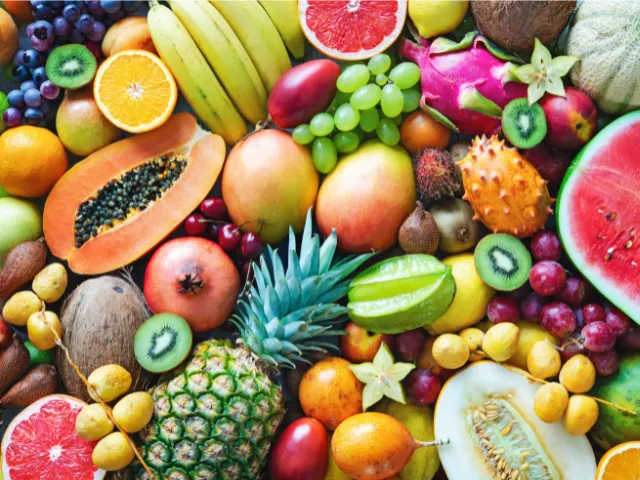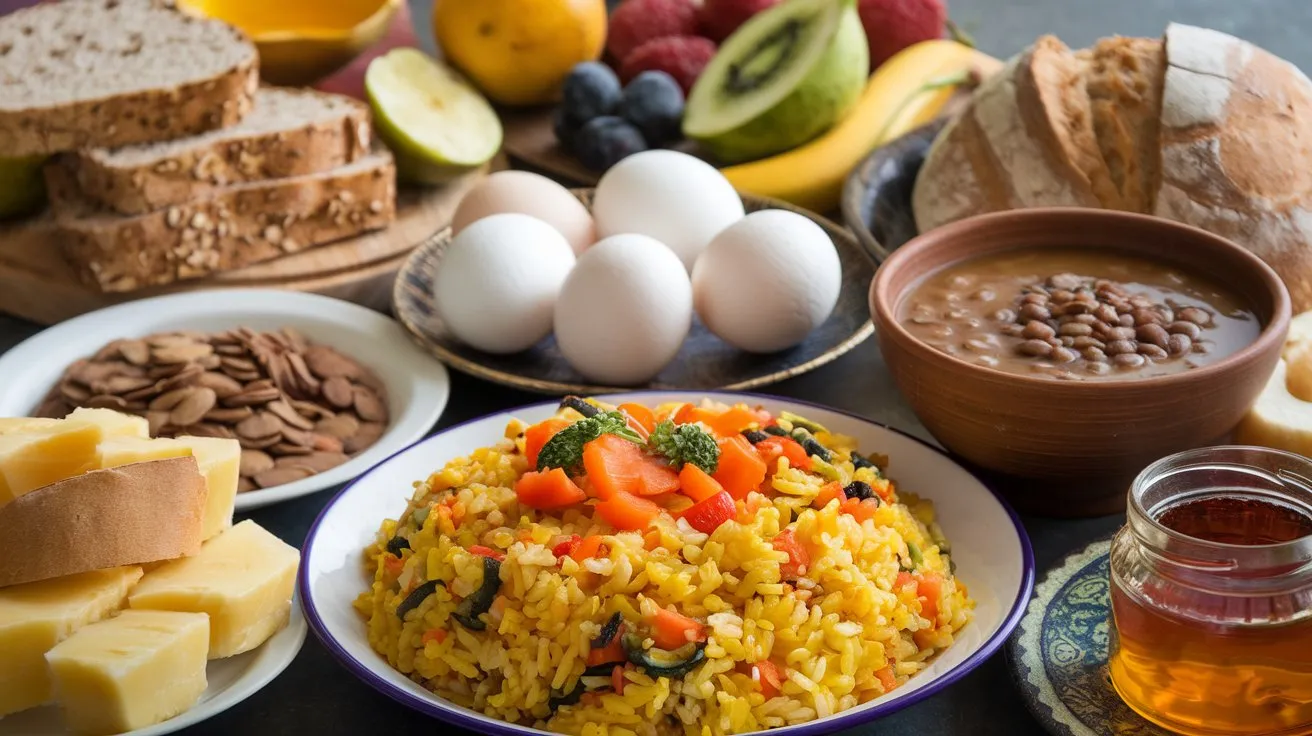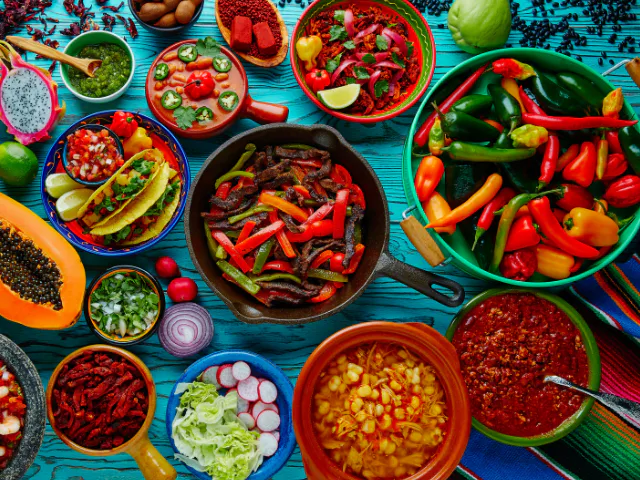The Sattvic diet is a high-fiber, low-fat vegetarian lifestyle that many of us embrace for its numerous health benefits. It is based on consuming whole, nutritious foods such as fruits, vegetables, sprouted whole grains, fresh fruit juices, legumes, nuts, seeds, and herbal teas. The Sattvic diet excludes animal proteins, fried foods, white sugar, and stimulants like caffeine. This diet is often associated with yoga enthusiasts and those interested in holistic living. Sattvic foods are considered the most nutritious, promoting longevity, physical strength, and mental health (Healthline).
Benefits of Sattvic Diet
Adopting a Sattvic diet can bring a multitude of health advantages. It is rich in nutrient-dense foods, which provide essential nutrients like protein, healthy fats, fiber, vitamins, minerals, and antioxidants. Here are some key benefits of a Sattvic diet:

| Benefit | Description |
|---|---|
| Promotes Longevity | Sattvic foods are associated with a high intake of micronutrients, which can enhance overall well-being. |
| Supports Weight Loss | The high fiber content may promote weight loss, as studies show that vegetarian dietary patterns are linked to lower body mass indexes and less body fat than non-vegetarians. |
| Reduces Chronic Disease Risk | This diet may lower the risk of developing chronic conditions such as diabetes, heart disease, and certain cancers, due to its protective effects. |
| Enhances Mental Clarity | Consuming a variety of wholesome foods can improve mental health and clarity, helping us stay focused and energized throughout the day. |
By incorporating a Sattvic-style eating pattern into our lives, we can experience these benefits while promoting overall health and well-being. For more information on how to implement this diet, explore our guide on incorporating sattvic diet and the key principles of sattvic diet.
Sattvic Food Guidelines
Embracing a Sattvic diet can lead to a healthier and more balanced lifestyle. Here, we outline the fundamental principles of a Sattvic diet and the types of foods we should embrace.
Sattvic Food Principles
The Sattvic diet is characterized by its focus on whole, nutritious foods. It is a high-fiber, low-fat vegetarian diet that promotes the intake of nutrient-dense foods. The key principles of our Sattvic diet include:
- Whole Foods: We prioritize unprocessed and natural foods, avoiding refined and artificial ingredients.
- Freshness: Fresh fruits, vegetables, and grains are essential. Foods should be consumed soon after preparation to retain their nutrients.
- Plant-Based: Our diet is strictly vegetarian, excluding meat, fish, and eggs, focusing instead on plant sources of protein such as legumes and nuts.
- Low Fat: We aim for a diet low in unhealthy fats, favoring healthy fats from sources like nuts and seeds.
- Mindful Eating: Eating should be a conscious and intentional act, fostering an environment of peace and gratitude.
Foods to Embrace
In our pursuit of a Sattvic lifestyle, we should incorporate a variety of foods that align with these principles. The following table summarizes the main food groups to embrace in a Sattvic diet:
| Food Group | Examples |
|---|---|
| Fruits | Apples, bananas, berries, oranges, mangoes |
| Vegetables | Spinach, carrots, broccoli, kale, zucchini |
| Grains | Brown rice, quinoa, whole oats, barley |
| Legumes | Lentils, chickpeas, black beans, mung beans |
| Nuts and Seeds | Almonds, walnuts, chia seeds, flaxseeds |
| Herbal Teas | Chamomile, peppermint, ginger |

The Sattvic diet is rich in essential nutrients, including protein, healthy fats, fiber, vitamins, minerals, and antioxidants, which can help promote overall health. It’s also linked to reduced risks of chronic conditions like diabetes, heart disease, and certain cancers.
By incorporating these foods into our meals, we can ensure that our diet is not only satisfying but also aligned with our holistic lifestyle goals. For additional information on the benefits of the Sattvic diet, visit our article on sattvic diet benefits. If you’re looking for ways to incorporate these foods into your daily meals, check out our guide on incorporating sattvic diet.
Sattvic Food List
In our journey towards embracing a sattvic lifestyle, we can curate a diverse and nourishing sattvic food list that enhances our well-being. This section highlights the fruits, vegetables, grains, and legumes that align with sattvic principles.
Fruits in Sattvic Diet
Fresh and organic fruits are integral to a sattvic diet. We prioritize seasonal, ripe fruits that are consumed in their natural state. Here is a list of fruits that embody the sattvic essence:
| Sattvic Fruits | |
|---|---|
| Apples | Kiwifruit |
| Apricots | Mangoes |
| Berries | Melons |
| Dates | Oranges |
| Dragonfruit | Peaches |
| Figs | Pears |
| Grapes | Pineapples |
We prefer fresh fruits over frozen or preserved varieties to maintain their natural vibrancy (Wikipedia).
Vegetables in Sattvic Diet
Mild vegetables form the backbone of our sattvic meals, while pungent varieties are to be avoided. Vegetables like garlic, onion, and mushrooms fall into the tamasic category and should be excluded. Below is a selection of vegetables that are generally considered sattvic:
| Sattvic Vegetables | |
|---|---|
| Carrots | Cucumber |
| Spinach | Bell Peppers |
| Zucchini | Green Beans |
| Cauliflower | Sweet Potatoes |
| Broccoli | Asparagus |
While some might include tomatoes and eggplants as sattvic, we lean towards the consensus that they may not fit the definition (Wikipedia).
Grains and Legumes in Sattvic Diet
Whole grains and legumes provide essential nourishment and energy. They can be enjoyed in various forms, and here’s a list of staples we can include in our diet:
| Sattvic Grains | Sattvic Legumes |
|---|---|
| Organic Rice | Mung Beans |
| Whole Wheat | Lentils |
| Spelt | Yellow Split Peas |
| Oatmeal | Chickpeas |
| Barley | Aduki Beans |
| Common Beans | |
| Bean Sprouts |
We can enhance the digestibility of grains by lightly roasting or sprouting them before cooking. This preparation method helps to remove some of their heavier qualities.
By incorporating these fruits, vegetables, grains, and legumes into our meals, we align our diets with sattvic principles, promoting a state of balance and vitality. For further insights on how to integrate these foods, check out our article on incorporating sattvic diet.
Cooking and Preparation
Cooking Methods for Sattvic Foods
In our journey toward embracing the Sattvic diet, we emphasize the importance of cooking methods that align with Sattvic principles. Sattvic foods are typically ripe, raw, or lightly cooked, ensuring that they retain their nutritional value and freshness. We should aim to prepare meals that are freshly made, high in nutrient-rich plant foods, and low in processed or fried items.
| Cooking Method | Description |
|---|---|
| Steaming | Preserves nutrients and flavor while using minimal fat. Ideal for vegetables. |
| Boiling | Quick and easy, suitable for grains and legumes. Retains most nutrients. |
| Light Sautéing | Uses minimal oil to enhance flavors without compromising the Sattvic qualities. |
| Baking | A great option for whole grains and vegetables, allowing for even cooking. |
It is crucial to avoid cooking methods that involve excessive heat or prolonged cooking times, as these can diminish the Sattvic qualities of the food. We should also refrain from using frozen foods or reheated leftovers, choosing instead to prepare warm meals that are easy to digest and agreeable for our bodies (Better Green Health).
Importance of Freshness
Freshness plays a key role in the Sattvic diet. Foods that are old or improperly prepared do not qualify as Sattvic. We should prioritize organic, locally sourced ingredients whenever possible. Consuming fresh produce not only enhances the flavor and quality of our meals but also contributes to our overall well-being.
The Sattvic approach encourages us to prepare meals with positive energy, as the way we cook affects the food’s energy and our experience of consumption. Freshly prepared meals are light to digest and can help in detoxifying the body, improving digestion, and promoting calmness in our daily lives.
Incorporating fresh, whole foods into our sattvic food list is essential for experiencing the full benefits of this diet. This practice aligns with the goal of achieving balance and harmony in our lives. By making these conscious choices, we enhance our physical and mental health, leading to a more vibrant existence.
Nutritional Considerations
When adopting a Sattvic diet, it is essential for us to be aware of potential nutritional deficiencies that may arise from excluding certain food groups. This section will delve into the nutrient deficiencies we might encounter and discuss the role of supplements in maintaining a balanced Sattvic lifestyle.
Nutrient Deficiencies

The Sattvic diet emphasizes whole, nutritious foods, including fruits, vegetables, whole grains, and legumes. However, it excludes many healthy foods such as meat, poultry, fish, and eggs, which are excellent sources of protein, healthy fats, and various micronutrients. This restriction could lead to nutrient deficiencies, particularly in the following areas:
| Nutrient | Potential Deficiency Risks |
|---|---|
| Protein | Limited sources in a plant-based diet may lead to inadequate protein intake. |
| Omega-3 Fatty Acids | Primarily found in fish, a lack of these essential fats can affect heart and brain health. |
| Vitamin B12 | Essential for nerve function and blood cell production, mainly found in animal products. |
| Iron | Important for energy levels; plant sources may not be as readily absorbed. |
| Zinc | Crucial for immune function, often found in meat and dairy. |
Consultation with a healthcare professional may be necessary to determine if supplements are needed, especially if we follow a strict Sattvic diet (Healthline).
Supplements in Sattvic Diet
Given the potential for nutrient deficiencies, we may consider incorporating specific supplements to ensure we meet our nutritional needs. Some recommended supplements for those following a Sattvic diet include:
- Omega-3 Fatty Acids: These can be sourced from algae-based supplements, providing a plant-based alternative to fish oil.
- Vitamin B12: Essential for those not consuming animal products; a B12 supplement can help prevent deficiency.
- Iron: If we struggle to meet iron needs through plant sources, an iron supplement may be beneficial.
- Protein Powders: Plant-based protein powders can help increase protein intake, especially for those with active lifestyles.
It is essential to prioritize freshly prepared foods and consider supplementation if necessary. The Sattvic diet can be rewarding and beneficial to our well-being when balanced correctly.
Balancing Sattva, Rajas, and Tamas
In our exploration of the Sattvic diet, it’s essential to understand the three qualities of nature: Sattva, Rajas, and Tamas. Each of these qualities influences our mental and physical well-being. By recognizing and balancing these energies, we can cultivate a healthier lifestyle.
Understanding Rajasic Foods
Rajasic foods are known for their stimulating effects on the mind. Consuming these foods can lead to feelings of agitation, restlessness, and irritability. As we pursue a meditative state, it is important to reduce our intake of rajasic foods. Common examples include stimulants such as caffeine and alcohol, as well as hot and spicy foods, fermented foods, onions, garlic, and meat.
| Rajasic Foods | Effects |
|---|---|
| Caffeine | Increases alertness but can lead to anxiety |
| Alcohol | May induce relaxation but disrupts clarity |
| Spicy Foods | Can boost metabolism but may cause discomfort |
| Fermented Foods | Good for gut health but may overstimulate |
| Onions & Garlic | Strong flavors can lead to agitation |
| Meat | Heavy and hard to digest, causing lethargy |
Avoiding Tamasic Foods

Tamasic foods are the least desirable within the Sattvic framework and should be avoided or eliminated altogether. These foods tend to have a dulling effect on both our bodies and minds, contributing to feelings of lethargy and cloudiness. Tamasic foods obstruct our pursuit of peace and purity. While meat is sometimes included in this category, the more fitting examples are foods that lack prana, which we can define as “dead” foods. This includes processed, canned, or leftover foods, as well as any food consumed in excess (beYogi).
| Tamasic Foods | Effects |
|---|---|
| Processed Foods | Low in nutrients, high in preservatives |
| Canned Foods | Lack freshness and vitality |
| Leftover Foods | Diminished prana and flavor |
| Excessive Eating | Leads to lethargy and discomfort |
By focusing on the Sattvic food list and avoiding rajasic and tamasic foods, we can create a more balanced diet that supports our physical and mental health.
FAQ
What is the Sattvic diet?
The Sattvic diet is a vegetarian lifestyle based on Ayurveda, emphasizing whole, nutritious foods like fruits, vegetables, sprouted grains, legumes, nuts, and seeds. It excludes animal proteins, fried foods, refined sugar, and stimulants such as caffeine. This high-fiber, low-fat diet is known for promoting longevity, physical strength, and mental clarity, and is popular among yoga practitioners and those seeking holistic living.
What are the benefits of following a Sattvic diet?
The Sattvic diet offers numerous health advantages. It’s rich in essential nutrients like protein, healthy fats, fiber, vitamins, and antioxidants. It promotes longevity, supports weight loss through its high fiber content, and reduces the risk of chronic diseases like diabetes, heart disease, and certain cancers. Additionally, the Sattvic diet enhances mental clarity by providing a variety of wholesome, natural foods that support focus and energy throughout the day.
What foods are included in a Sattvic diet?
The Sattvic diet consists of fresh, nutrient-rich foods such as fruits (apples, bananas, berries, mangoes), vegetables (spinach, carrots, broccoli, zucchini), whole grains (brown rice, quinoa, oats), legumes (lentils, chickpeas, mung beans), nuts (almonds, walnuts), and seeds (chia seeds, flaxseeds). Herbal teas like chamomile and peppermint are also encouraged. These foods promote overall well-being and align with the Sattvic principles of purity and balance.
Are there foods to avoid on a Sattvic diet?
Yes, certain foods are avoided in the Sattvic diet due to their heavy, stimulating, or dulling effects on the mind and body. These include animal proteins (meat, eggs), fried or processed foods, refined sugar, caffeinated beverages, onions, garlic, and fermented foods like vinegar. These foods are either considered tamasic (dulling) or rajasic (stimulating), which can disturb the balanced state that Sattvic foods aim to achieve.
How does the Sattvic diet affect mental and emotional well-being?
The Sattvic diet promotes mental clarity and emotional balance by focusing on fresh, wholesome foods that support calmness and stability. The absence of stimulating or heavy foods helps to reduce feelings of agitation, restlessness, and lethargy, encouraging a peaceful and focused state of mind. This diet also fosters mindfulness and gratitude in eating, further enhancing emotional well-being.
How do I start incorporating the Sattvic diet into my lifestyle?
To begin incorporating the Sattvic diet, focus on fresh, plant-based foods like fruits, vegetables, whole grains, nuts, and seeds. Avoid processed or heavily spiced foods, and prepare meals using simple cooking methods such as steaming, boiling, or light sautéing. Eating mindfully and preparing meals with fresh ingredients ensures you align with the Sattvic principles of purity and balance. Fresh, warm meals are also encouraged over reheated or leftover foods.
Can the Sattvic diet help with weight loss?
Yes, the Sattvic diet can support weight loss due to its high fiber content and low calorie density. Foods like fresh fruits, vegetables, whole grains, and legumes are filling and nutritious, promoting satiety while helping to maintain a healthy body weight. Vegetarian dietary patterns, like the Sattvic diet, are linked to lower body mass indexes and reduced body fat.
What are the key cooking methods used in the Sattvic diet?
In the Sattvic diet, cooking methods focus on preserving the freshness and nutritional value of foods. Steaming is a preferred method for vegetables, while boiling is ideal for grains and legumes. Light sautéing with minimal oil and baking are also encouraged. These methods help retain the natural energy and nutrients of the food, supporting a balanced and nourishing diet.
Are there any nutritional concerns with following a Sattvic diet?
While the Sattvic diet is rich in essential nutrients, it may lack certain nutrients typically found in animal products, such as protein, vitamin B12, iron, and omega-3 fatty acids. To prevent deficiencies, those following the Sattvic diet may consider supplements like algae-based omega-3, vitamin B12, and plant-based protein powders. Consulting a healthcare professional can ensure you meet your nutritional needs.





